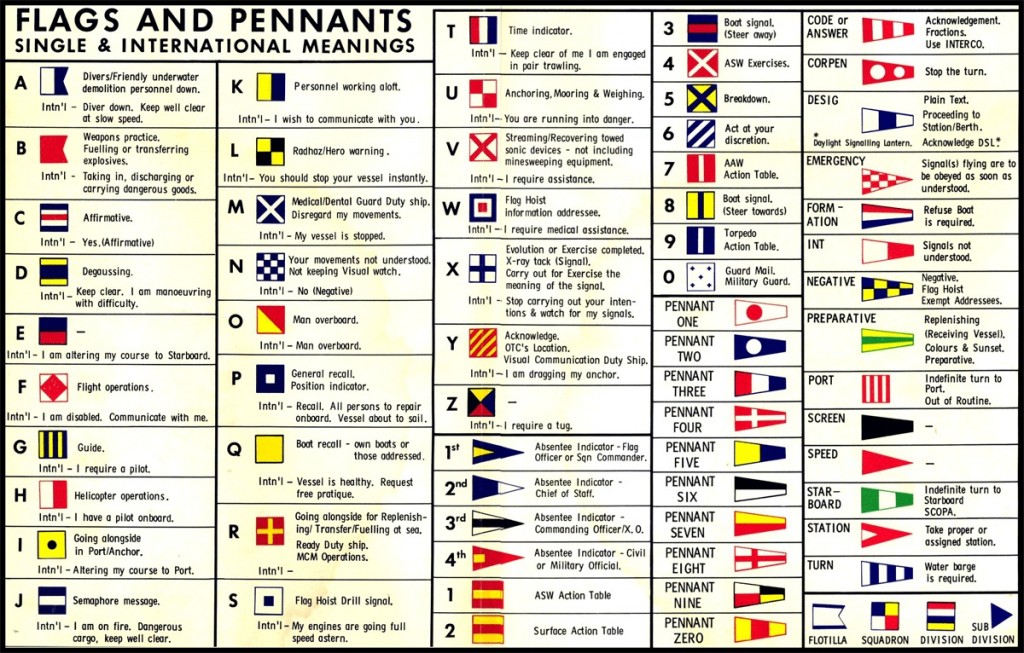Flags could ‘speak’ at sea
 By James Breig
By James Breig
Writing in a Boston publication in 1849, an anonymous person shared his “Notes of a Voyage in the Plymouth Rock.”
The cruise from Boston to Liverpool, England, lasted 20 days, a span that provided the author with plenty of leisure time to observe life on the ocean. He remarked on story-telling among passengers, exercise routines, schools of porpoises and the opportunity to send letters home.
The latter activity required the deployment of flags at sea, which the writer said involved “speaking…a ship at the distance of several miles.” “Speaking a ship” meant communicating across the waves with another vessel – in this instance, a boat headed westward.
As the two ships neared each other, the passengers scrambled to quickly pen notes to relatives and friends. Meanwhile, the captain brought out the flags.

“The pleasing part,” wrote the author, “was the telegraph. This is managed by little flags, of various colors, each representing one of the numbers” from zero to nine. “These, being fastened together in various ways, may be made to represent any number.”
Once they knew the number, the captain of each ship consulted signal books, which disclosed what the numbers stood for, including standard questions and answers, like “Where are you bound?” Thus, by using the pennants, the ships could “speak” to each other.
First, the Plymouth Rock raised the American flag to identify its point of origin. The other hoisted a British banner. That exchange of cloth greetings moved the author, who wrote, “When I beheld the national emblems of two of the first nations in the earth fluttering in the breeze, and recollected that I had many friends and relations in both those countries, I felt a glow of something like pride.”
Next to go up the mast were “five little flags representing the name of our ship,” an act echoed by the other vessel. It was The Superb, but it was bound for Quebec, not Massachusetts. All of the eager letter-writers slumped to learn that their mail would not be going home.
As the two boats parted, the author called the use of the flags an “everyday occurrence” to sailors, but one “which had afforded us land-men considerable amusement.”

Great article! I’ve never thought about how ships could communicate with each other before radios were invented. Good info 🙂